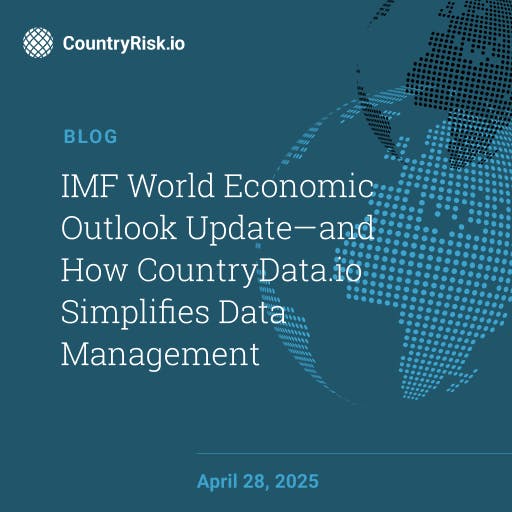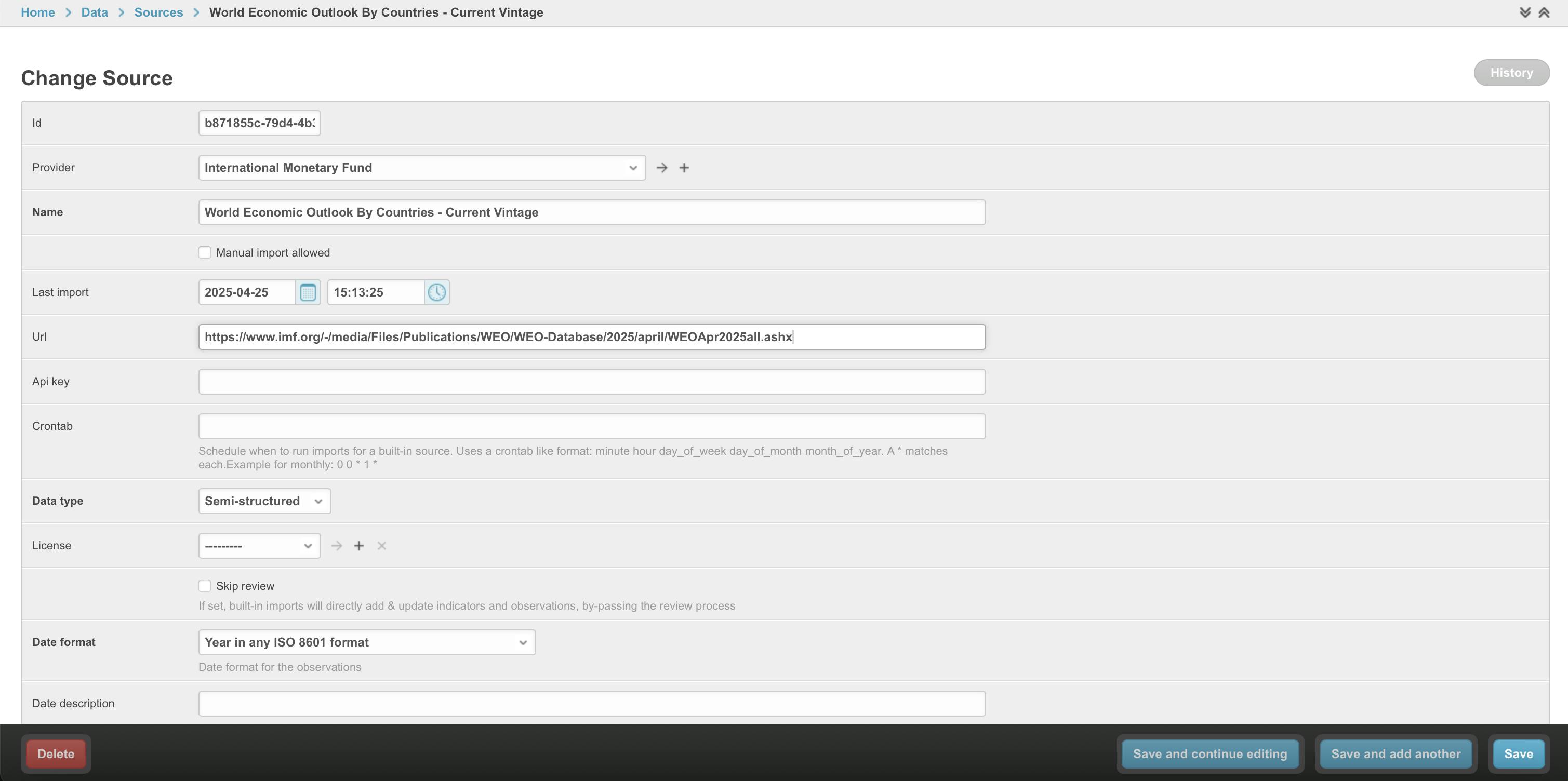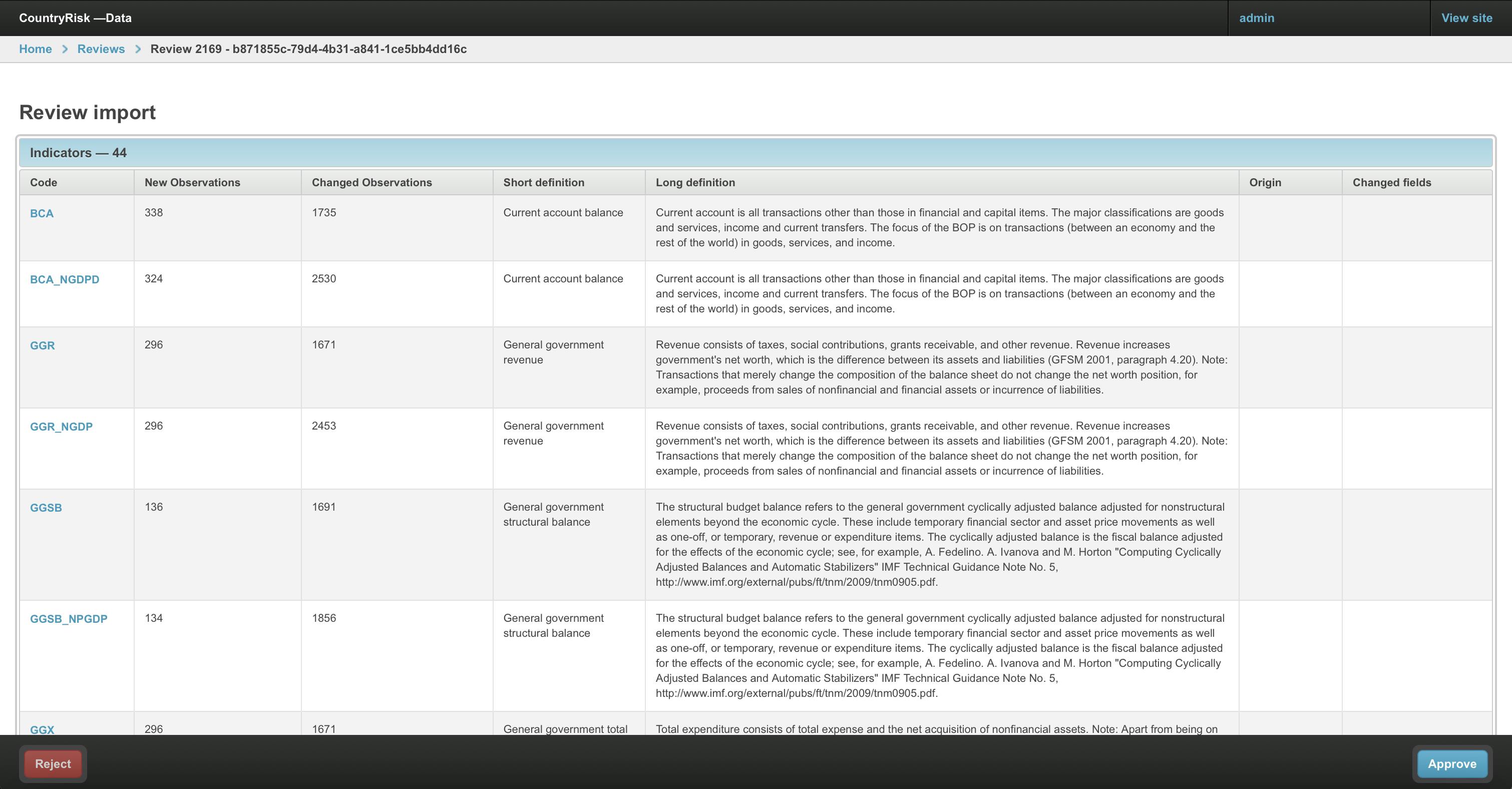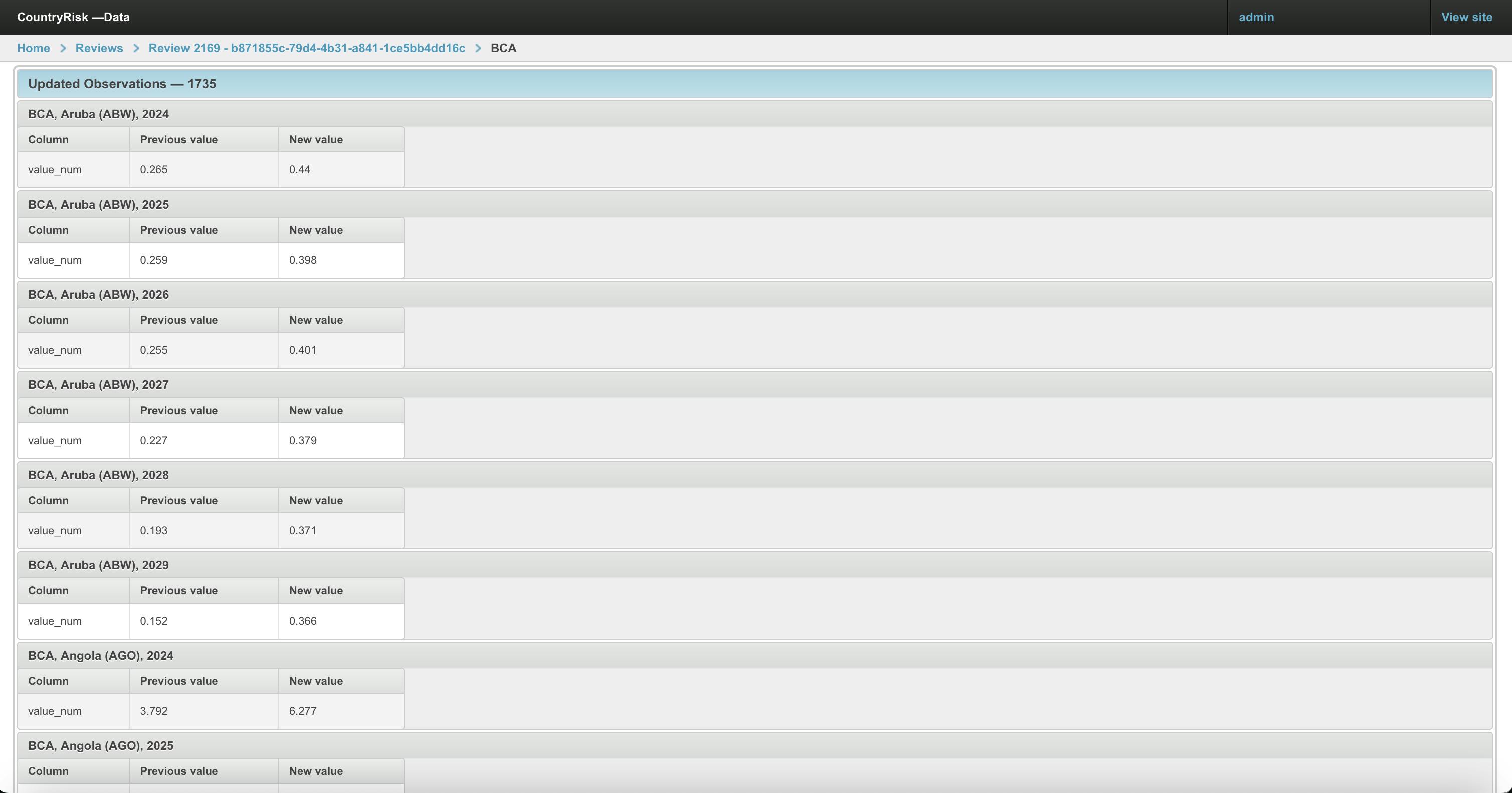IMF World Economic Outlook Update—and How CountryData.io Simplifies Data Management

Bernhard Obenhuber
Apr 28, 2025

Every April and October, economists and sovereign risk analysts look forward to the IMF/World Bank Annual Meetings in Washington, DC. Even if you can’t make the trip, these gatherings deliver a valuable “virtual gift”: an updated World Economic Outlook (WEO) database. The WEO—covering 44 macroeconomic indicators for almost 200 countries—pairs historical series with five-year forecasts, making it the de facto baseline for countless public- and private-sector research teams. Rather than debate forecast accuracy (we’ll save the spaghetti charts for another day), this post focuses on one challenge analysts always face: turning that raw WEO spreadsheet into ready-to-use data for quantitative models. Here’s how we do it—in three quick steps—using CountryData.io, our internal data management platform (https://www.countrydata.io).
1. Point to the Latest WEO Download URL
The IMF publishes each WEO release as a spreadsheet for bulk download—accessible only via a unique download link that changes every cycle. For April 2025, the URL is: .../WEO-Database/2025/april/WEOApr2025all.ashx
In CountryData.io’s admin interface, we simply update that URL. If the IMF provided a permanent link (e.g. …/WEO-latest.xlsx), we could automate regular checks. Until then, this manual tweak takes just seconds. Below you see a snippet of our admin interface where we just have to replace the URL and can set multitude of attributes for each data source.

2. Trigger an Automated Import
With the URL in place, one click starts the import process:
- Download the spreadsheet
- Parse 44 indicators across ~200 countries
- Validate formats, units, and metadata
In roughly four minutes, the system loads everything into a staging area and flags the job status as “For Review.” At that point, a colleague receives a notification to perform a quality check—ensuring separation of duties and data integrity.
3. Review, Approve, and Publish
Data quality is our top priority—too many teams rely on blind bulk imports. CountryData.io’s review dashboard highlights:
- New observations added since the last update
- Revised observations where historical values have changed
In the screenshot below, you can see the overview presented to the reviewer.

The reviewer can closely inspect all data changes. In the screenshot below, you can see a selection of newly added observations. For example, Aruba’s current account figure for 2030 has been added at USD 0.368 billion, with the dimension attribute “estimate” indicating that it is a forecast rather than an actual value. Each observation can carry multiple dimensions, which we see as a key strength of CountryData.io. This approach avoids the need to create multiple separate indicators for essentially the same metric, keeping the dataset cleaner and more consistent.

For revised data points, both the previous and updated values are displayed for the reviewer. As shown in the screenshot below, Aruba’s 2024 current account figure was revised upward from USD 0.265 billion to USD 0.44 billion.

Once the reviewer approves, all changes are committed to our production database.
From Data to Models to API
Approved data feeds directly into our sovereign-risk and ESG scoring models—treating each model like any other data source. We can schedule automated updates (daily, weekly, monthly) and push the results to clients via our REST API. Speaking of which, if you’d like API access or a Google Colab demonstration of these features, check out our API documentation or get in touch.
Looking Ahead
Working with IMF WEO data is—relatively speaking—smooth sailing. Many high-value data providers, particularly in compliance and AML risk scoring, still rely on fragmented spreadsheets and PDF reports. Stay tuned for our next post, where we’ll dive into the trials of consolidating AML country-risk datasets.
Whether you’re managing macroeconomic forecasts or complex compliance metrics, a robust data-management platform like CountryData.io can save countless hours and reduce costly errors. Ready to streamline your workflow? Drop us a line at [email protected]!
